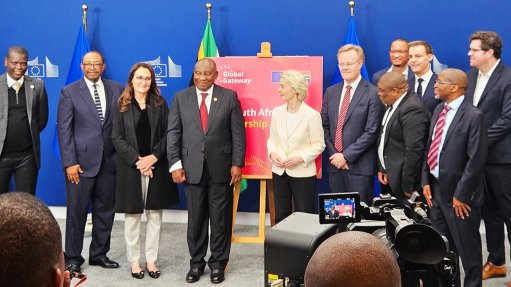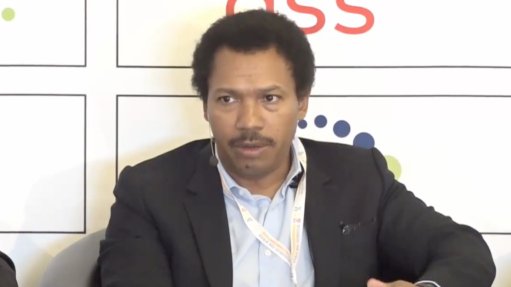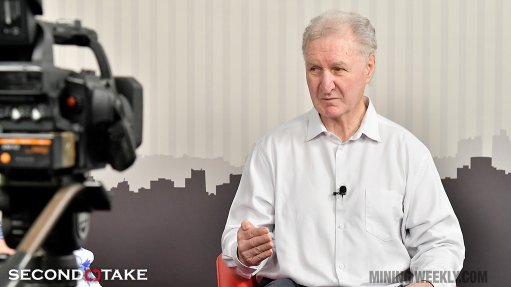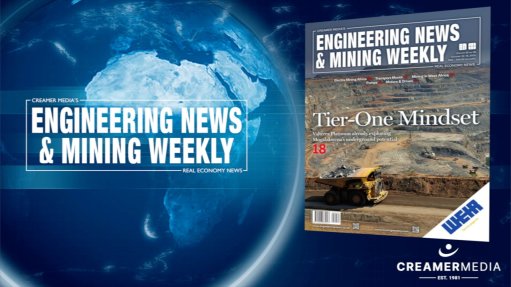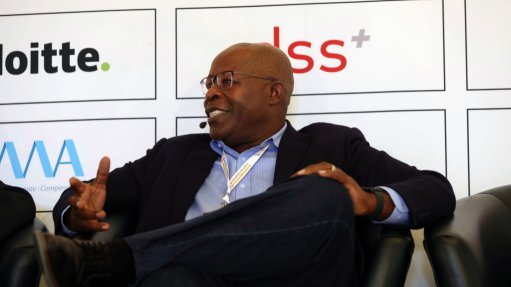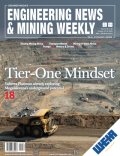Digital platform contributes to successful implementation of mining capital projects
The success of mining projects largely depends on thousands of interconnected decisions made every day, at every level, across multiple organisations, thereby making them highly complex.
As such, inefficiencies and risks can inevitably lead to additional project costs and delays that can grow exponentially along with the size of the project.
However, computer software company Oracle says mining project owners can ensure they are “getting the most out of their investments” by improving how their project data and collaboration are managed.
Oracle Construction and Engineering industry strategy director Werner Maritz, therefore, suggested this week that “the mining industry has an exciting time ahead as [miners] not only grow and improve their core operations, but are expanding their traditional project portfolios to include initiatives around decarbonisation, energy security and sustainability”.
Referencing a recent study done by global organisation EY, Maritz said capital productivity in the mining sector is a problem, with 64% of projects either running late or over budget, with an average cost overrun of 39%.
The same study showed that miners which improve capital productivity now will be “better positioned to navigate ongoing uncertainty and drive better project outcomes. It noted that mining companies that invest in the implementation of enhanced project management capabilities could reap benefits of between 15% and 30% of the project’s value.
It is for this reason and benefit that the Oracle Smart Construction Platform, for example, is purpose-built for construction and engineering projects, as Maritz explained that it “connects people, processes and technology, and empowers teams to make data-informed decisions across the full lifecycle and keep the entire project community synchronised, resulting in more predictable project outcomes”.
During a mining capital works-focused webinar on April 6, co-hosted by Oracle and Creamer Media Publishing, JSE-listed thermal coal company Thungela Resources project engineer Lerato Mazibuko said Oracle Aconex provided a digital platform for the company to manage large data for the entire project lifecycle.
Thungela is a newly JSE-listed thermal coal company that demerged from Anglo American in June 2021.
“The management of information and data generated during the lifecycle of the project can be a challenge, especially when data is in different locations with a variety of stakeholders based in different geographical locations,” she said, bemoaning that “the processes of managing project information and data was cumbersome” and, to a large extent, manual, thereby leaving room for error.
One of Thungela’s strategies to mitigate this challenge, she explained, was the miner adopting a digital platform to ensure a common data environment, common communication platform and information repository to improve multi-stakeholder collaboration and effective revision control.
“Aconex provided this digital platform where the project now has a single platform that can deal with a large variety of project data to support effective decision making.
“Other benefits of the system are the introduction of workflows and concurrent digital technical reviews to maximise team collaboration, collaborative design reviews are enabled via workflows, as well as the capability to exchange big files and bulk loading and sharing of project information and ensuring multiple stakeholders have access to the most recent information at all times,” she elaborated.
Iron-ore miner Kumba Iron Ore project controls manager Deon Stassen, meanwhile, enthused that the miner had “experienced some of the benefits of digital platform deployment predominantly in the form of transparency of projects management and control processes as they unfold in the project delivery space”.
In response to questions posed by Maritz, he explained that this digital platform provides Kumba with improved visibility of its process performance across its delivery effort, which allows the miner to identify and eliminate superfluous activity and excessive delays in, for example, review and approval cycles.
“Having this level of visibility allows us to identify and adjust, not only any specific process, but also behaviors within the project teams that could hamper or even jeopardise our delivery success,” he said.
Considering that complex capital projects with multiple stakeholders, like mining-related projects, generate a lot of documentation and contractual communication which may be difficult to manage with disparate systems, Stassen commented that, as digital transformation brings capital projects into the modern information management era, the originators and recipients are directly connected as the business process intends, with the document control function placing emphasis on the monitoring of timeous transmission, quality of metadata content and document processing integrity across the common data environment.
“Our project team members are empowered to initiate and track their own review and approval cycles without the effect of “bottlenecking at document control”. Our ability to delegate and/or relieve any individual within a functional or governance process can occur seamlessly without affecting our ability to consistently apply governance due to our role-based workflow templates,” he added, noting that Kumba believes this approach would continue “to aid tremendously in shortening project handover and archiving processes”.
In addition, traditionally, month-end close is a busy period for capital project controls teams with progress measurement, cost reports, forecasting and status reports. Stassen enthused that adopting a digital platform – such as Oracle Aconex – has enabled Kumba to establish standard processes within the common data environment, leading to the miner’s typical month-end processing efforts within the project controls teams being significantly reduced.
“Our reporting is automated and reads directly from our common data environment, which cannot, and does not have to be, manipulated prior to publishing. We have one version of the truth, and our monthly close and reporting cycle normally does not exceed one or two days from month-end. Our controls team members do not have to work excessive hours or overtime to achieve our reporting deadlines,” he noted.
He added that Kumba has also “experienced a number of instances where some of our projects could make good tactical decisions within a few hours as the relevant cost and schedule information was already available by merely visiting our reporting hub in less than three clicks”.
Overall, Stassen is confident that the adoption of digital platforms within mining capital projects is the start of “an exciting frontier” in the Southern African context.
“We would continue to align and integrate our capital project delivery environment with our FutureSmart MiningTM approach, which is our blueprint for the future of our business – A future in which broad innovative thinking, enabling technologies, and collaborative partnerships will shape an industry that is safer, more sustainable and efficient, and better harmonised with the needs of our host communities and society as a whole,” he said.
In response to this, Oracle Construction and Engineering strategic account marketing Pieter Bouwer expressed confidence that many organisations in engineering and construction, as well as the related software space, would start to recognise how a common data environment (CDE) can enable more effective collaboration across project teams.
“All the project’s information is captured in a single platform. This includes all the formal documents, drawings, models, contractual collaboration and field operations information such as Inspections and punch list and cost and contract management data,” he said.
Oracle Aconex, Bouwer explained, “respects data ownership of all participating organisations. Everybody only has access to data that has been physically transmitted to them, which is known as the concept of neutrality. Aconex provides guaranteed delivery and an ironclad audit trail so that no one should pitch up at site with the incorrect version of a drawing”.
Aconex, he added, provides the tools to find information swiftly through metadata information from a CDE where “nothing can ever get deleted”, thereby driving trust and increasing adoption.
However, to ensure the success of this, Bouwer said project information must be housed in a secure CDE that uses rigorous security protocols to ensure all stakeholders’ data is safeguarded from threats.
In other words, a CDE is an essential part of an engineering or construction project.
Two of the key outcomes of using a CDE focus on project collaboration and information management, which includes benefits such as capturing a full audit trail of a built asset through a highly secure, unalterable, undeletable, and neutral environment, as well as finding efficiencies in producing coordinated information, reducing both time and cost; connecting teams, models, and project data in one environment, ensuring a single source of project truth where project participants only have access to what they are authorised to have access to.
In addition, and based on authorised access, project teams can also extract selections of the most recent approved information and data from shared areas provided by a true CDE, while simultaneously supporting downstream activities by allowing the reuse of information.
However, while the benefits are plenty, Bouwer noted concern about cyber or data security, which he said was a “critical concern to businesses today”.
In this regard, Bouwer said Oracle was committed to helping customers operate globally in a fast-changing business environment and address the challenges of an ever more complex regulatory environment.
He explained that cloud computing is fundamentally different from traditionally on-premises computing.
The traditional model sees organisations typically being in full control of their technology infrastructure located on-premises through, for example, the physical control of the hardware, and full control over the technology stack in production.
In the cloud, Bouwer explained, organisations can leverage resources and practices that are under the control of the cloud service provider, while still retaining some control and responsibility over other components of their information technology solution.
As a result, he said, managing security and privacy in the cloud is “often a shared responsibility between the cloud customer and the cloud service provider”, adding that the distribution of responsibilities between the cloud service provider and customer also varies based on the nature of the cloud service.
As a global software-as-a-service vendor, Bouwer said Oracle runs a multi-tier approach to security, which includes corporate security practices on how customer data is protected; an Oracle software security assurance on software development practices, as well as Oracle cloud security practices; global customer support for security practices and practices relating to Oracle’s consulting services; and advanced customer support.
Announcements
What's On
Subscribe to improve your user experience...
Option 1 (equivalent of R125 a month):
Receive a weekly copy of Creamer Media's Engineering News & Mining Weekly magazine
(print copy for those in South Africa and e-magazine for those outside of South Africa)
Receive daily email newsletters
Access to full search results
Access archive of magazine back copies
Access to Projects in Progress
Access to ONE Research Report of your choice in PDF format
Option 2 (equivalent of R375 a month):
All benefits from Option 1
PLUS
Access to Creamer Media's Research Channel Africa for ALL Research Reports, in PDF format, on various industrial and mining sectors
including Electricity; Water; Energy Transition; Hydrogen; Roads, Rail and Ports; Coal; Gold; Platinum; Battery Metals; etc.
Already a subscriber?
Forgotten your password?
Receive weekly copy of Creamer Media's Engineering News & Mining Weekly magazine (print copy for those in South Africa and e-magazine for those outside of South Africa)
➕
Recieve daily email newsletters
➕
Access to full search results
➕
Access archive of magazine back copies
➕
Access to Projects in Progress
➕
Access to ONE Research Report of your choice in PDF format
RESEARCH CHANNEL AFRICA
R4500 (equivalent of R375 a month)
SUBSCRIBEAll benefits from Option 1
➕
Access to Creamer Media's Research Channel Africa for ALL Research Reports on various industrial and mining sectors, in PDF format, including on:
Electricity
➕
Water
➕
Energy Transition
➕
Hydrogen
➕
Roads, Rail and Ports
➕
Coal
➕
Gold
➕
Platinum
➕
Battery Metals
➕
etc.
Receive all benefits from Option 1 or Option 2 delivered to numerous people at your company
➕
Multiple User names and Passwords for simultaneous log-ins
➕
Intranet integration access to all in your organisation











